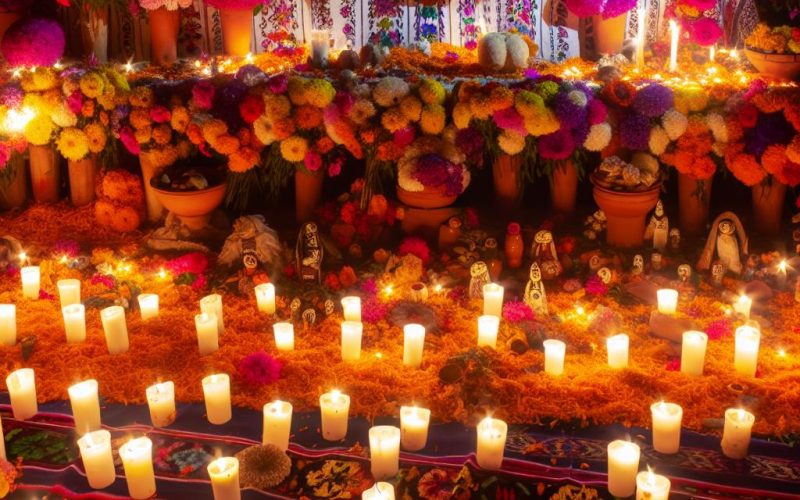The Significance of the Day of the Dead in Guatemala
The Day of the Dead, locally known as Día de los Muertos, occupies a significant position in Guatemalan culture. Observed annually on November 1st and 2nd, it serves as a reflective period when families honor and remember their deceased loved ones. This event represents a harmonious blend of indigenous beliefs and Catholic traditions, making it distinct from similar festivities across other Latin American regions.
Traditional Practices
The commemoration of the Day of the Dead in Guatemala involves a series of rituals that convey both solemnity and joyous festivity. Central to this observance is the practice of visiting cemeteries. Families arrive at these sacred sites to lovingly clean and decorate the graves where their departed relatives rest. Typically, they adorn these gravesites with flowers, candles, and cherished mementos, creating an atmosphere of respect and remembrance.
The culinary customs associated with this event are equally significant. One essential dish prepared by Guatemalan families is fiambre, a unique cold salad composed of assorted meats, cheeses, and vegetables. This dish not only satisfies the palate but also serves as an emblem of cultural amalgamation, representing the fusion of various cultural influences.
The Giant Kite Festival
Among the most striking elements of the Day of the Dead in Guatemala is the Giant Kite Festival, predominantly celebrated in the towns of Sumpango and Santiago Sacatepéquez. Here, enormous kites, known in Spanish as barriletes, take center stage. Crafted intricately from tissue paper and bamboo, these kites are adorned with elaborate designs. Their purpose extends beyond visual splendor, as they are flown over cemeteries to symbolize communication with the spirits. The vibrant colors and impressive dimensions of the kites not only captivate the eye but are also believed to aid in guiding ancestral spirits back to the earthly realm.
Symbolism and Beliefs
The Day of the Dead celebration in Guatemala is deeply embedded with themes of symbolism relating to the cycles of life and death. This observance provides a moment for families to meditate on these cycles, simultaneously celebrating the lives once lived by those who have passed on. The act of flying kites, for example, embodies the connection between the earthly plane and the spiritual world, reinforcing the idea of continuity and connection with ancestors. As families participate in these traditions, they are expressing not just cultural, but profound spiritual beliefs, further reinforcing their cultural identity.
Influence of Indigenous Culture
The vivid influence of Guatemala’s indigenous heritage is undeniably apparent in the Day of the Dead celebrations. Practices such as the use of kites and community-oriented festivities trace their roots back to customs that predate the arrival of Spanish conquistadors in the 16th century. Such traditions from indigenous groups like the Maya have been carefully preserved and woven into contemporary observances, keeping alive the historical essence and linking modern participants to their historical roots.
To learn more about Guatemalan cultural practices and explore the richness of their traditions, interested individuals might consider utilizing resources like the Official Site of Guatemala Tourism.
In summary, the Day of the Dead in Guatemala transcends a mere cultural celebration. Through its rituals involving food preparation, kite flying, and cemetery visits, Guatemalans deeply engage with their cultural heritage. This engagement serves to honor their ancestors while simultaneously fostering a profound sense of community and continuity that bridges the past and the present. It is an event that not only commemorates the deceased but also celebrates the enduring bond between them and their living relatives, reinforcing a shared cultural lineage.
The unique way Guatemalans observe the Day of the Dead highlights their rich cultural tapestry woven from the strands of historical tradition and spiritual beliefs. By partaking in these age-old customs, families in Guatemala not only remember those who have gone before them but also reaffirm their cultural narratives and communal ties in the present. This synthesis of past and present traditions showcases the dynamic nature of cultural practices in Guatemala, illustrating how they evolve while staying rooted in the past.
